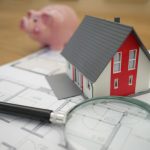As landlords, you understand the importance of maintaining your rental properties. Regular maintenance not only preserves the life of your properties but also enhances the value. However, when your properties start aging, the maintenance often becomes more challenging and costlier. This article will guide you on how to create an effective and cost-efficient maintenance plan for your aging rental properties in Liverpool.
Understanding Your Housing Properties
Before initiating a maintenance plan, it’s crucial to thoroughly understand your properties. An aging property will have different needs than a newly constructed building.
En parallèle : What Are the Best Approaches to Property Downsizing for Retirees in the UK?
Survey Your Properties
Start by conducting a comprehensive survey of your properties. This includes inspecting the physical condition of your buildings, the age of your structures, and the extent of repairs needed. Look out for issues such as structural damage, outdated electrical systems, or inefficient heating and cooling systems. This will help you pinpoint where your property needs attention and how to allocate funds effectively.
A voir aussi : How to Deal with Heritage Site Regulations When Renovating Properties in York?
Listen to Your Tenants
Your tenants are an invaluable source of information. They live in your buildings every day and can provide firsthand information about issues you may not be aware of. Regular feedback from them can help identify potential problems before they become major issues.
Prioritising Repairs and Upgrades
Not all repairs and upgrades are created equal. Some will offer a better return on investment and should be prioritised.
Safety First
When creating a maintenance plan, safety should always take preference. Any issues that pose a risk to your tenants’ safety or violate local housing codes need to be addressed immediately. This could include faulty wiring, broken stairs, or malfunctioning smoke detectors.
Energy Efficiency
Upgrading to energy-efficient appliances and fixtures can save significant money over time. While the upfront cost might be higher, the long-term savings through reduced utility bills can make this a worthwhile investment.
Building a Network of Reliable Contractors
Having a network of reliable, local contractors can significantly reduce maintenance costs. This network can provide you with cost-effective solutions and timely repairs, preventing minor issues from becoming major problems.
Start Local
Local contractors will understand the city’s unique challenges and can provide solutions tailored to these conditions. By fostering relationships with them, you can often negotiate better rates and prioritise your properties when urgent issues arise.
Consider Specialised Contractors
In some cases, specialised contractors may be necessary. For example, if your property has a historical significance or unique architectural features, you may need to hire a contractor experienced in preserving older homes.
Leveraging Technology for Maintenance
In the digital age, technology can play a significant role in property maintenance. It can make the process more organised, efficient, and cost-effective.
Maintenance Management Software
Investing in a good property maintenance management software can greatly help in managing and scheduling regular maintenance. It can also help track repair histories, analyse costs and identify recurring issues.
Smart Home Technologies
Smart home technologies can act as a preventative measure in identifying potential problems before they escalate. Devices like smart thermostats, leak detectors or security systems not only enhance your property’s value but also help prevent costly repairs.
Offering Sheltered Housing
Offering sheltered housing can be a win-win for both landlords and tenants. It’s an increasingly preferable option for older people who require support but wish to retain their independence.
Modifying Properties
Basic modifications such as installing grab bars, ramps or stairlifts can make your properties more appealing to an older demographic. This can open a new tenant pool and potentially increase your rental income.
Partnering with Social Care Providers
Partnering with social care providers can help provide support services to your tenants, making your properties more desirable. This could include housekeeping, meals or medical services. This approach can improve your tenant retention and create a sense of community within your properties.
Creating a cost-effective maintenance plan for aging rental properties is not a one-size-fits-all process. It requires a clear understanding of your properties, strategic prioritisation of repairs, building a network of reliable contractors, leveraging technology and possibly offering sheltered housing. But with careful planning and a proactive approach, you can ensure your properties continue to provide a safe, comfortable home for your tenants and a steady income for you.
Implementing Disabled Facilities in Rental Properties
Making your rental properties more accessible to older people and individuals with disabilities can increase the property’s appeal and open up a new demographic of potential tenants.
Assessing the Needs
The first step is to assess the needs of the older and disabled population. This involves understanding the common physical and health challenges they face. For instance, mobility issues, vision impairment, or chronic health conditions.
Making Adjustments
Based on the assessed needs, make the necessary adjustments in your property. This could include installing ramps for wheelchair access, fitting grab bars in bathrooms, or widening doorways. Other modifications could involve installing stairlifts or elevators for properties with multiple floors.
Navigating Local Authority Regulations
It is crucial to work in tandem with the local council to ensure your modifications comply with local building codes and disabled facilities regulations. The local authority can provide valuable guidance and, in some cases, may even offer financial assistance for making these modifications.
Health and Wellbeing Considerations
Remember, these adjustments aren’t just about physical access. They’re also about improving the health and wellbeing of the tenants who live there. By making your properties more accessible, you’re providing a safer and more comfortable living environment. This not only enhances the lives of your tenants, but also contributes positively to the ageing population and to society as a whole.
Partnering with a Housing Association for Specialist Housing
Partnering with a housing association can provide access to specialist housing options for older and disabled tenants. This adds value to your properties, making them more attractive to potential tenants and offering a unique rental proposition.
Understanding Housing Associations
Housing associations are non-profit organisations that provide affordable housing. Many of them offer specialist housing, including sheltered housing and supported living extra care housing. These housing options cater specifically to older people, disabled persons, and people with particular health care needs.
Benefits of Partnering
By partnering with a housing association, you can access their expertise in providing care and support services. They can also assist in recommending suitable modifications to your properties and even help with maintenance repairs.
Long-Term Investment
This partnership can also be a beneficial long-term property investment. By offering specialist housing, you attract a specific, often underserved market. This can lead to better tenant retention and a steady rental income.
Conclusion
Creating a cost-effective maintenance plan for your ageing rental properties in Liverpool requires a strategic and proactive approach. You need to understand the needs of your properties, prioritise essentials repairs, and leverage technology to streamline maintenance. But don’t stop there. Go beyond just maintaining and consider improving your properties to cater to the ageing population and disabled persons. This involves implementing disabled facilities and potentially partnering with a housing association. Not only will these steps enhance your properties and ensure their longevity, but they’ll also increase their appeal to a wider tenant pool. With careful planning and execution, you can ensure that your properties continue to provide a safe, comfortable home for all tenants while securing a steady income for you.






